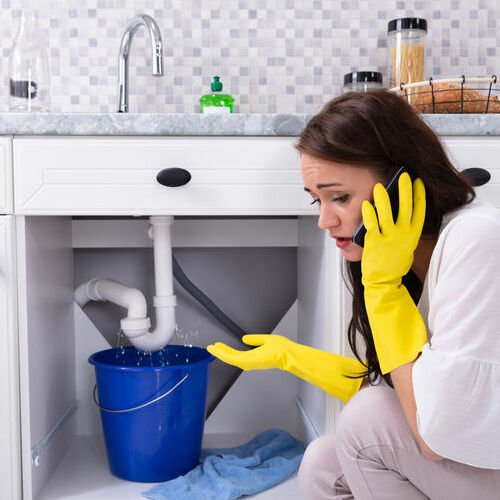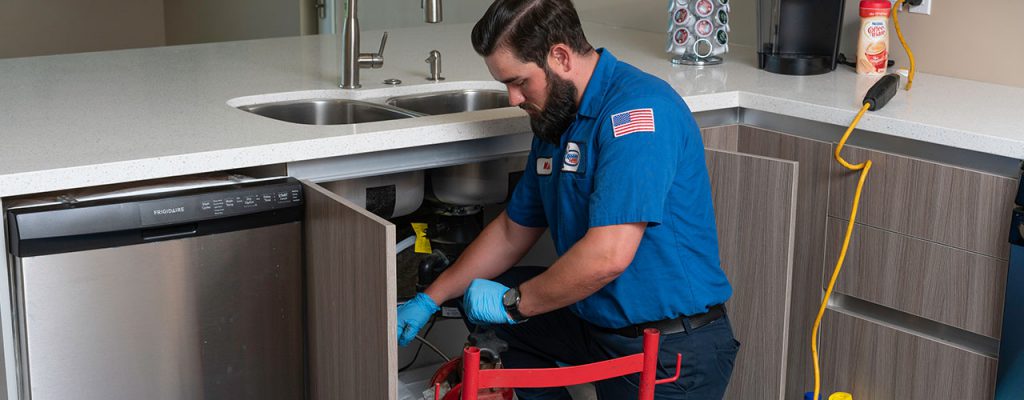This post below pertaining to Common Plumbing Problems in Older Homes is exceptionally stimulating. Try it and make your own personal results.

Older homes frequently include beauty, character, and background, yet they can additionally bring a host of plumbing concerns. Whether you're managing aging pipes, low tide stress, or leakages, recognizing how to attend to these common problems is important to preserving a risk-free and practical home. In this guide, we'll check out the common pipes obstacles dealt with by older homes and provide sensible services to maintain your plumbing in top shape.
Understanding Typical Pipes Problems
Aging Pipelines
One of the most usual issues in older homes is maturing pipelines. Depending on the age in which your home was developed, the pipelines could be made from materials that have actually deteriorated in time, such as galvanized steel, cast iron, or even lead. These products can corrode, become brittle, or create leaks, causing water damages and potential carcinogen.
Water Top Quality Testing
Older pipes can impact the top quality of your water. Conduct a water top quality test to look for impurities such as lead, corrosion, or various other pollutants that might be presented by maturing pipes.
Solutions for Common Pipes Concerns
Replacing Aging Pipelines
If your home has old, wearing away pipelines, think about replacing them with modern-day products like copper or PEX. This can be a substantial investment, but it will certainly stop future issues and boost the safety and integrity of your plumbing system.
Fixing Low Water Stress
To repair low tide stress, begin by cleansing or changing old fixtures and getting rid of mineral buildup in the pipes. If the issue lingers, it may be necessary to replace sections of rusty pipes.
Repairing and Changing Dripping Pipelines
For small leaks, you can utilize pipe clamps or epoxy putty as a momentary fix. However, it's finest to replace dripping pipes totally to prevent further damages.
Updating Fixtures
Updating old fixtures to modern-day, water-efficient models can enhance your home's pipes performance and reduce water intake. Seek components with the WaterSense tag for the best efficiency.
Handling Pipe Rust
If your pipelines are rusted, replacing them with corrosion-resistant materials like copper, PVC, or PEX is the very best remedy. Normal inspections and water quality maintenance can aid stop further deterioration.
Low Tide Stress
If you're experiencing low tide pressure, it could be as a result of mineral deposits, rust inside the pipes, or old components that are no more functioning effectively. This can be a significant trouble, specifically in areas like showers and sinks.
Leaking Pipelines
Leakages are one more frequent concern in older homes, often brought on by corroded or worn-out pipelines. Even tiny leaks can bring about considerable water damages, mold development, and enhanced water bills otherwise resolved promptly.
Outdated Fixtures
Outdated pipes components such as taps, commodes, and showerheads not only look old however may additionally be less efficient, vulnerable to leaks, or incompatible with contemporary plumbing standards.
Pipe Corrosion
Rust is a common problem in older pipelines, specifically those made from galvanized steel or actors iron. Corroded pipes can limit water circulation, create staining, and at some point bring about leakages or pipeline bursts.
Examining the Problem of Your Plumbing
Inspecting Noticeable Pipelines
Start by examining any visible pipelines in your house, such as those in basements, crawl spaces, or under sinks. Look for indicators of rust, leaks, or corrosion, which can suggest underlying problems.
Checking for Leaks
Look for leaks by evaluating locations around faucets, bathrooms, and under sinks. You can additionally check your water meter prior to and after a duration of no water use to find hidden leakages.
When to Call a Professional
While some pipes issues can be handled with do it yourself solutions, there are times when it's ideal to call a professional. If you're handling major leakages, extensive corrosion, or are unclear concerning the condition of your pipelines, an accredited plumber can supply experienced analysis and repair.
Preventive Maintenance Tips
Regular Assessments
Regularly examine your plumbing system for indications of damage. Capturing concerns early can prevent pricey fixings down the line.
Water Pressure Law
Guarantee your water pressure is within the recommended variety to avoid stressing your pipelines and fixtures. A plumbing can install a stress regulatory authority if needed.
Water Quality Upkeep
Set up water filters or conditioners if your water high quality is poor. This can protect your pipes and components from damage brought on by tough water or pollutants.
Positive Pipe Replacement
If your home has older pipelines, consider positive substitute before significant problems occur. This can conserve you from emergency repairs and water damage.
Verdict
Taking care of plumbing problems in older homes calls for a combination of watchfulness, preventative upkeep, and prompt upgrades. By understanding the typical obstacles and recognizing when to seek expert assistance, you can guarantee your pipes system stays practical and trusted for several years to come.
Common Plumbing Issues in Older Homes and How to Fix Them
Owning an older home in Australia comes with its unique charm and a set of challenges, especially when it comes to plumbing. The Sunshine Coast has many older properties that can harbour plumbing problems that aren t just inconvenient but potentially costly. Here s a look at some common plumbing issues in older homes and expert advice on how to handle them.
Outdated Piping Materials
Many older homes were built with galvanised steel, cast iron, or even lead pipes, materials that are far from ideal by today s standards. Galvanised pipes are prone to corrosion and clogging, while lead pipes pose serious health risks.
How to Fix:
Replacing old pipes is a job for a professional. Upgrading to copper or PVC piping not only enhances water quality and flow but also increases the property s safety and value. If you suspect your home has outdated materials, a licensed plumber can conduct a thorough inspection and recommend the best course of action.
Corrosion and Pipe Degradation
Over time, exposure to water and minerals can cause pipes to corrode, leading to leaks, bursts, and water contamination. Corrosion is especially common in homes over 50 years old.
How to Fix:
Regular inspections can catch early signs of corrosion. If corrosion is found, the affected section of piping often needs to be replaced. For homes with extensive corrosion, a complete plumbing overhaul might be necessary. It s crucial to consult with a plumbing expert to understand the extent of the issue.
Tree Root Intrusion
Older neighbourhoods usually have mature trees whose roots can intrude into pipe lines, causing blockages or damage. This is particularly problematic for sewer lines, where roots seek out water sources.
How to Fix:
A plumber can use a specialised camera to inspect sewer lines for root intrusion. If roots are a problem, methods like root cutting or hydro-jetting can clear the obstruction. In severe cases, part of the pipe may need replacing. Consider root barriers around the piping to prevent future issues.
Inadequate Water Pressure
Low water pressure in older homes can be due to various factors, including corroded water lines, sediment build-up in pipes, or outdated fixtures.
How to Fix:
First, check if the low pressure is isolated to one area or throughout the house. Replacing old fixtures can sometimes resolve the issue. However, if the problem is more widespread, it might be due to sediment or corrosion. Flushing the system or replacing the affected pipes usually restores normal pressure. Again, a professional assessment is advisable.
Outdated Fixtures
Older homes often feature fixtures that are not only visually dated but functionally inefficient. This includes everything from toilets and taps to showerheads and washing machine hoses.
How to Fix:
Updating these fixtures can improve both water efficiency and the aesthetic appeal of your home. Modern fixtures are designed to conserve water, which can significantly reduce your water bill and lessen your environmental impact.
Conclusion
Maintaining the plumbing in an older home requires a proactive approach. Regular checks and updates are key to preserving these beautiful properties. If you re facing plumbing issues in your older home, it s best to call on experienced professionals like Green & Gold Plumbing & Gas. With the right expertise, even the most daunting plumbing problems can be resolved, ensuring that your home s character is maintained while its functionality is enhanced.
https://gandgplumbing.com.au/common-plumbing-issues-in-older-homes-and-how-to-fix-them/

I was guided to that editorial about Main Plumbing Issues Found in Old Houses through an associate on another web page. Sharing is good. Helping people is fun. Thanks a lot for going through it.
Contact Us Today